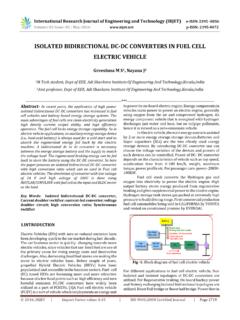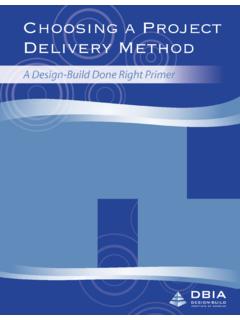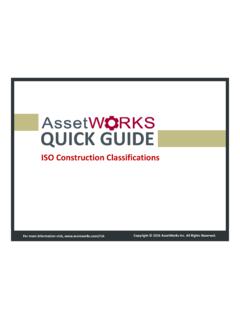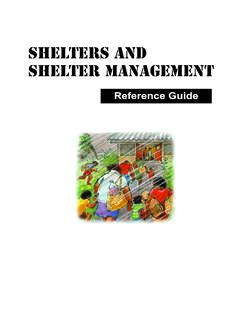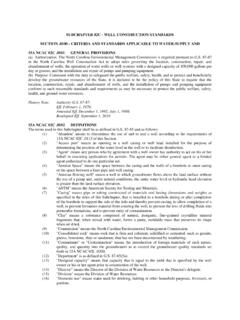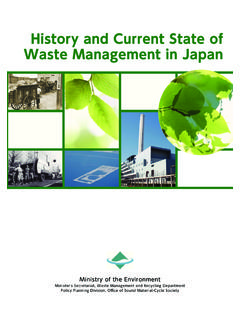Transcription of PESTLE TECHNIQUE A TOOL TO IDENTIFY EXTERNAL RISKS IN ...
1 International Research Journal of Engineering and Technology (IRJET) e-ISSN: 2395-0056 Volume: 03 Issue: 01 | Jan-2016 p-ISSN: 2395-0072 2016, IRJET ISO 9001:2008 Certified Journal Page 384 PESTLE TECHNIQUE A TOOL TO IDENTIFY EXTERNAL RISKS IN construction PROJECTS NITANK RASTOGI 1 , Dr . TRIVEDI 2 1 POST GRADUATE STUDENT ( ) , CIVIL ENGINEERING DEPARTMENT, MADHAV INSTITUTE OF TECHNOLOGY AND SCIENCE , GWALIOR ( ) , INDIA 2 PROFESSOR , CIVIL ENGINEERING DEPARTMENT , MADHAV INSTITUTE OF TECHNOLOGY AND SCIENCE , GWALIOR (MP) , INDIA Abstract : Effective risk management can bring greater rewards to project performance by enhancing productivity and reducing the impact of threats.
2 Risk Identification is thus the first step in Risk management Process . The objective of this article is to IDENTIFY EXTERNAL RISKS associated with any construction project by using PESTLE TECHNIQUE thus minimizing their impact on project objectives before they actually occur . PESTLE TECHNIQUE is a strategic management TECHNIQUE which can be used effectively in EXTERNAL risk identification process of Risk management Plan . It identifies RISKS under various subgroups under broad headings of Political , Economical , Social , Technological , Legal , Environmental . Internal RISKS are easy to IDENTIFY as plenty of past data for similar type of projects is available with company . It is the EXTERNAL RISKS which are the beyond the control of company and about which less data is available that makes construction projects vulnerable to failure or incurring heavy losses in monetary terms.
3 As every stakeholder of project want high returns on the invested money it is necessary to IDENTIFY the RISKS associated and to take the appropriate measures to mitigate them , so the project will meet all objectives and give better returns on the money invested . PESTLE Analysis works well in conjunction with SWOT Analysis as it helps in identifying internal RISKS associated with project . This article discusses PESTLE meaning , its historical background , its various forms , step by step method to IDENTIFY the RISKS , its advantages and disadvantages , and finally conclusion . Key Words : PESTELE , Political , Economical , Social , Technological , Legal , environmental , EXTERNAL RISKS . 1. Introduction- construction projects are unique in nature.
4 Every project is different from the other. construction projects have following characteristics : i) Long gestation period ii) Heavy investments iii) Non tradability of output , which makes them susceptible to various RISKS throughout its life cycle which can affect project objectives in terms of money in form of cost overruns , delays in completion , and inferior quality . Thus it is necessary to IDENTIFY the RISKS associated with the project, prior to their occurrence so as to take proper measures to mitigate them. Broadly RISKS are of two types i) Internal RISKS ii) EXTERNAL RISKS . Internal RISKS are company specific or project specific about which past database is available in abundance thus can be identified easily using techniques like RBS (Risk Breakdown Structure ) , PERT/CPM etc.
5 EXTERNAL RISKS are those RISKS about which little is known, less database is available , and no structured method is available to IDENTIFY them . These RISKS are beyond the control of organization. Thus difficult to IDENTIFY . PESTLE TECHNIQUE is a strong tool borrowed from Strategic management Techniques of Business management to IDENTIFY EXTERNAL RISKS in construction projects thus act as an aid in Risk management Process . International Research Journal of Engineering and Technology (IRJET) e-ISSN: 2395-0056 Volume: 03 Issue: 01 | Jan-2016 p-ISSN: 2395-0072 2016, IRJET ISO 9001:2008 Certified Journal Page 385 2.
6 What is PESTLE PESTLE is a strategic planning tool used to evaluate the impact of political , economic, social, technological , environmental and legal factors might have on a project. It involves an organization considering the EXTERNAL environment before starting a project. It is a good way of ensuring one has captured all potential RISKS and issues . PESTLE Analysis is an analytical tool for strategic business planning. PESTLE is a strategic framework for understanding EXTERNAL influences on a business or on any project . PESTLE stands for P= POLITICAL E= ECONOMIC S= SOCIAL T=TECHNOLOGICAL L= LEGAL E=ENVIRONMENTAL Political: These factors determine the extent to which a government may influence the economy or a certain industry.
7 [For example] a government may impose a new tax or duty due to which entire revenue generating structures of organizations might change. Political factors include tax policies, Fiscal policy, trade tariffs etc. that a government may levy around the fiscal year and it may affect the business environment (economic environment) to a great extent. Economic: These factors are determinants of an economy s performance that directly impacts a company and have resonating long term effects. [For example] a rise in the inflation rate of any economy would affect the way companies price their products and services. Adding to that, it would affect the purchasing power of a consumer and change demand/supply models for that economy.
8 Economic factors include inflation rate, interest rates, foreign exchange rates, economic growth patterns etc. It also accounts for the FDI (foreign direct investment) depending on certain specific industries who re undergoing this analysis. Social: The sociological factor takes into consideration all events that affect the market and community socially. Thus, the advantages and disadvantages to the people of the area in which the project is taking place also need to be considered. These events include cultural expectations, norms, population dynamics, healthy consciousness, career altitudes, global warming, etc. These factors scrutinize the social environment of the market, and gauge determinants like cultural trends, demographics, population analytics etc.
9 An example for this can be buying trends for Western countries like the US where there is high demand during the Holiday season. Technological: These factors pertain to innovations in technology that may affect the operations of the industry and the market favorably or unfavorably. This refers to automation, research and development and the amount of technological awareness that a market possesses. This factor takes into consideration all events that affect technology. Since technology often becomes outdated within a few months after it is launched, it is important to consider this. This factor could also take into consideration all barriers to entry in certain markets and changes to financial decisions.
10 Legal : This factor takes into consideration all legal aspects like employment, quotas, taxation, resources, imports and exports, etc. These factors have both EXTERNAL and internal sides. There are certain laws that affect the business environment in a certain country while there are certain policies that companies maintain for themselves. Legal analysis takes into account both of these angles and then charts out the strategies in light of these legislations. For example, consumer laws, safety standards, labor laws etc. Environmental: These factors include all those that influence or are determined by the surrounding environment. Factors of a business environmental analysis include but are not limited to climate, weather, geographical location, global changes in climate, environmental offsets , ground conditions, ground contamination, nearby water sources, etc.








